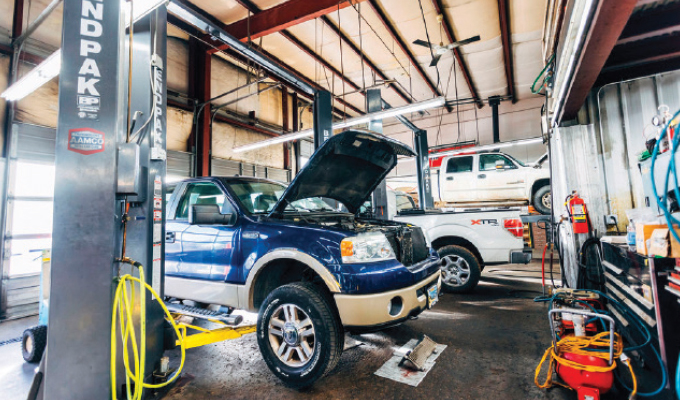According to the Vacationer, an expected 122 million people, or 63% of Americans, will travel during the 2021 holiday travel season. That’s an increase of 41% compared to holiday travel in 2020. The majority of those travelers, 60%, will travel by car. And as a commercial driver, the last thing you’ll want to deal with on busy roads in holiday traffic is a repair or a breakdown. Be sure to follow AAMCO’s road tips for the holidays to make sure you and your fleet are prepared.
CHECK TIRES & SAVE GAS
- Save money on gas mileage by up to 3% with properly inflated tires. A car that gets 30 mpg gets an extra 1 mpg with adequate air in the tires.
- Cold temperatures can cause a drop in tire pressure. Deflated tires also reduce the tread and the traction of the car, which significantly increases the chances of sliding on icy patches.
- Be sure to read your owner’s manual or the side of your door for suggested pounds per square inch.
MONITOR FLUIDS
- Oil: It’s the lifeblood of your engine and transmission. Cold temperatures make motor oil thicker and create unwanted friction and potentially damage in the engine. Consider using a lighter grade of oil in the winter months if you live in a cold climate. Be sure to check the oil, fuel, air, and transmission filters at the same time.
- Antifreeze: Drivers should keep their antifreeze/engine coolant mix at the appropriate levels to prevent the engine from freezing and reduce corrosion. A 50/50 mix will keep fluids from freezing at temperatures as low as -34 degrees.
- Wiper fluid: Top off your windshield washer fluid reservoir with appropriate fluid to keep your windshield clean and clear in all types of weather. Don’t fill with water—it could freeze and burst the tubing, causing costly repairs.
BATTERY CHECK
- Keep track of your battery’s age. A car battery typically lasts three to five years.
- Cold temperatures reduce a vehicle’s battery power by up to 50% and cause a car’s electrical system to work harder, particularly with the increased power demands of heating systems, defrosters, windshield wipers, and powering equipment.
- Battery cables and clamps should also be checked regularly for fraying or corrosion. Battery acid corrosion appears as a white, powdery substance but can be cleaned with baking soda, water, and a toothbrush.
CLEAR WARNING LIGHTS
- Are you or your fleet drivers driving around with the check engine or warning lights on thinking you’ll get around to investigating later? Get it checked and cleared out soon because it could be something serious and end up costing a lot of money.
- 33% of Americans drive with their check engine light on for an average of nine days. Don’t be a statistic.
KEEP WINDOWS CLEAN & CLEAR
- Windshield wipers that streak, squeak, or flop should be replaced. Make sure wiper blades aren’t cracking or deteriorating.
- Test defrosters and allow time for condensation to clear from the entire windshield before heading out on the road. (Hint: The air conditioner in your vehicle must work properly for the defrost cycle to work.)
- Clear all snow and ice from the windshield for proper visibility and from other parts of the car for the safety of all drivers.
PACK A SAFETY KIT
- Stash extra face masks, disinfecting wipes, hand sanitizer, a thermometer, and even a package of rapid COVID tests if needed, to help protect and monitor your health while on the road.
- Plan ahead, if possible, and be prepared for unexpected closures of gas stations due to labor shortages. Further, be aware of state/local COVID regulations along your route.
- Keep an emergency kit inside your vehicle that includes a flashlight, jumper cables, cell phone charger, ice scraper, snow brush, and blanket.




